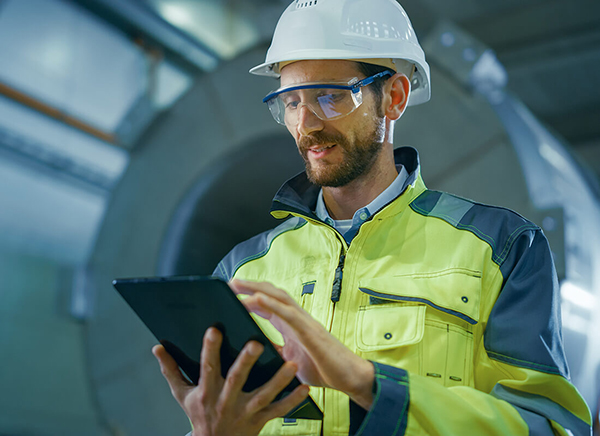Unlike the stable and predictable workforce of the past, today’s workers are hard to find, hard to engage, and hard to keep.

By Russell Fadel, CEO & Co-Founder at Augmentir
Today’s workforce challenges stem from the unprecedented levels of dynamism in the areas of skills diversity, reduced tenure, and increased churn from the “Great Resignation.” Unlike the stable and predictable workforce of the past, today workers are hard to find and keep.
The result is that companies are struggling to onboard, guide, and support their frontline workforce so that it can work at acceptable levels of safety, quality, and productivity. Smart, Artificial Intelligence (AI) powered connected worker platforms provide the tools to not only survive in this new normal but to also thrive.
Using AI to give frontline workers the tools and information they need when they need it is one way to help increase engagement and retention. The other way is to help them feel connected to the actual importance of their work.
Over the years, the manufacturing industry has done a good job of connecting machines into the fabric of the business and giving operators the necessary data to help run those machines better. However frontline workers, the last piece of connectivity, are unfortunately the least connected set of workers in the company. From a collaboration standpoint, frontline workers should be fully integrated into the digital thread of the business so they have the support and guidance they need to do their jobs correctly. Secondly, the areas where workers are doing well and where they are struggling need to be clearly understood so management can match people with the tasks where they excel.
The consistent story of the manufacturing workforce is that this group is aging and that 30-40% of that workforce will leave within the next five years, taking valuable, hard to capture tribal knowledge with them.. In the last five years, the tenure of manufacturing workers had dropped to 17% and that decrease escalated even more as a result of the pandemic. To manage this rapidly changing workforce, manufacturers will need a more data-driven approach powered by AI to dynamically personalize work instructions to the needs of each individual worker.
With Covid came an immediate need for remote presence, but the real issue is the idea that a subject matter expert needed to be on site for support. When we think about having frontline workers fully connected to the organization, at any moment in time, they should have direct access to the tools and resources that enable them to do their job better. Connected work in the future means using AI to provide frontline workers with access to internal and external resources that are appropriate for them at their fingertips–enabling every worker to perform like your best SME.
Another interesting statistic resulting from Covid is that employee engagement is down almost 20% from pre-Covid times. AI is extremely helpful in measuring signals of engagement and also provides tools to the organization to increase the level of engagement of frontline workers. One thing that causes a reduction in engagement is when a worker feels like they can’t perform a job and they become frustrated.
Delivering personalized guidance and support to each worker based on factors including proficiency, recency, and certifications can mitigate some of this frustration and help workers perform at their personal best.
The historic methods of onboarding and training taught workers everything they could “possibly” do which resulted in overtraining. The data-driven era we’re entering into is one of continuous learning and development powered by AI. Training shifts from the things frontline workers are possibly going to do to what they are probably going to do. This results in reduced training times, continuous learning and development, and the ability to upskill at any point as needed. Reducing the initial onboarding training and allowing training to occur at the moment of need, coupled with AI for scoring, provides insights into the most effective training modules as well as what needs to improve based on demonstrated execution.
AI is largely embedded in most aspects of our lives and can answer important questions for manufacturers such as process improvement and individualized targeted training. It will play an equally large role in the progression of the connected workforce and influencing the next generation of how people work. AI can offer data driven insights to identify opportunities across all work processes to focus continuous improvement teams on areas with the highest ROI. Adopting these methodologies early on will simplify the overall digital transformation process for manufacturers and positively contribute to the health of their bottom line.

Russell Fadel is CEO & Co-Founder, Augmentir, the world’s only smart connected worker suite.
In this episode, I sat down with Beejan Giga, Director | Partner and Caleb Emerson, Senior Results Manager at Carpedia International. We discussed the insights behind their recent Industry Today article, “Thinking Three Moves Ahead” and together we explored how manufacturers can plan more strategically, align with their suppliers, and build the operational discipline needed to support intentional, sustainable growth. It was a conversation packed with practical perspectives on navigating a fast-changing industry landscape.